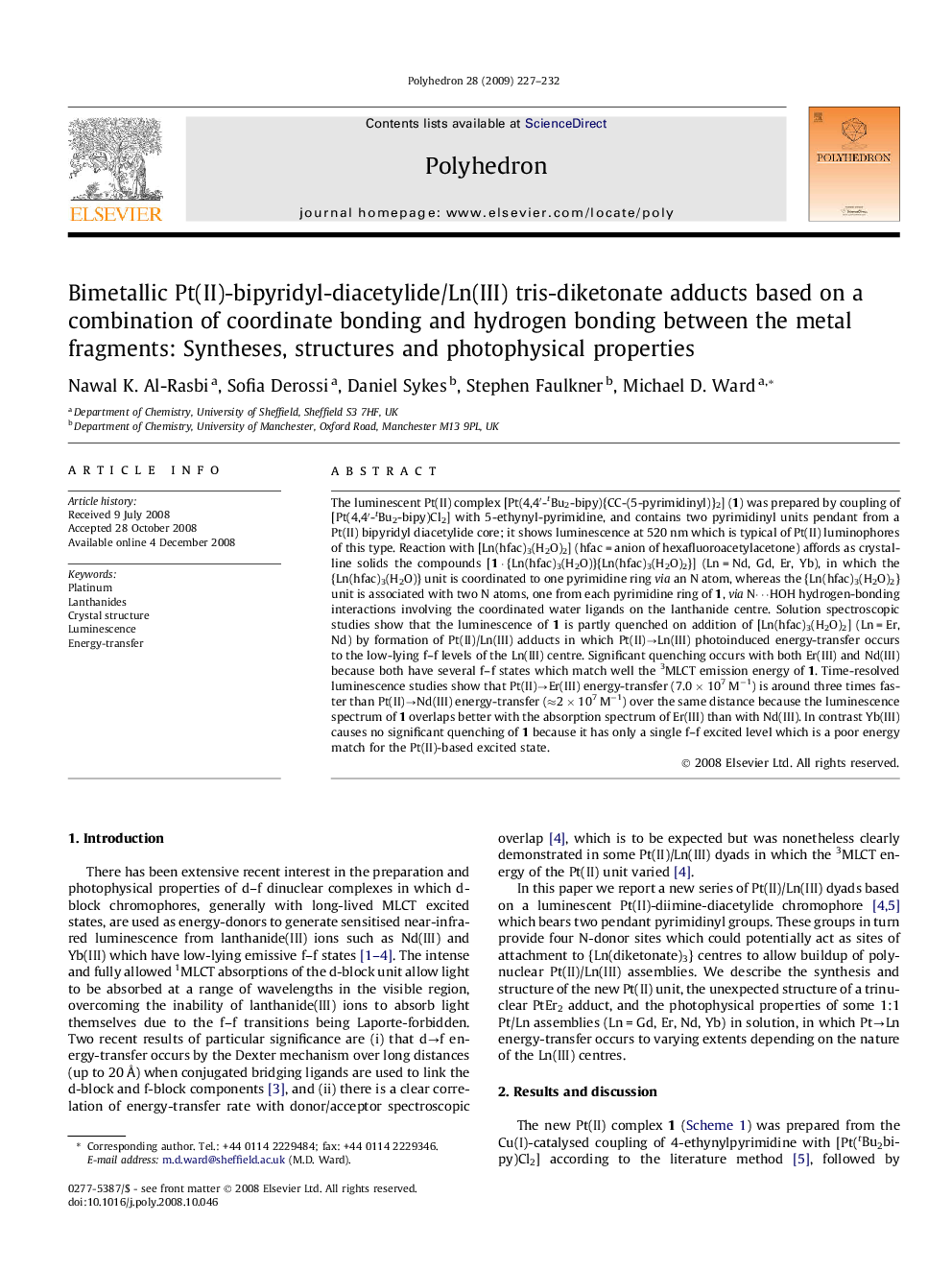| Article ID | Journal | Published Year | Pages | File Type |
|---|---|---|---|---|
| 1339030 | Polyhedron | 2009 | 6 Pages |
The luminescent Pt(II) complex [Pt(4,4′-tBu2-bipy){CC-(5-pyrimidinyl)}2] (1) was prepared by coupling of [Pt(4,4′-tBu2-bipy)Cl2] with 5-ethynyl-pyrimidine, and contains two pyrimidinyl units pendant from a Pt(II) bipyridyl diacetylide core; it shows luminescence at 520 nm which is typical of Pt(II) luminophores of this type. Reaction with [Ln(hfac)3(H2O)2] (hfac = anion of hexafluoroacetylacetone) affords as crystalline solids the compounds [1 · {Ln(hfac)3(H2O)}{Ln(hfac)3(H2O)2}] (Ln = Nd, Gd, Er, Yb), in which the {Ln(hfac)3(H2O)} unit is coordinated to one pyrimidine ring via an N atom, whereas the {Ln(hfac)3(H2O)2} unit is associated with two N atoms, one from each pyrimidine ring of 1, via N⋯HOH hydrogen-bonding interactions involving the coordinated water ligands on the lanthanide centre. Solution spectroscopic studies show that the luminescence of 1 is partly quenched on addition of [Ln(hfac)3(H2O)2] (Ln = Er, Nd) by formation of Pt(II)/Ln(III) adducts in which Pt(II)→Ln(III) photoinduced energy-transfer occurs to the low-lying f–f levels of the Ln(III) centre. Significant quenching occurs with both Er(III) and Nd(III) because both have several f–f states which match well the 3MLCT emission energy of 1. Time-resolved luminescence studies show that Pt(II)→Er(III) energy-transfer (7.0 × 107 M−1) is around three times faster than Pt(II)→Nd(III) energy-transfer (≈2 × 107 M−1) over the same distance because the luminescence spectrum of 1 overlaps better with the absorption spectrum of Er(III) than with Nd(III). In contrast Yb(III) causes no significant quenching of 1 because it has only a single f–f excited level which is a poor energy match for the Pt(II)-based excited state.
Graphical abstractThe luminescent Pt(II) complex [Pt(4,4′-tBu2-bipy){CC-(5-pyrimidinyl)}2] (1), which has two pendant pyrimidine rings, forms adducts [1 · {Ln(hfac)3(H2O)}{Ln(hfac)3(H2O)2}] in which the {Ln(hfac)3} units are associated with pyrimidine rings of 1via a combination of Ln–N coordinate bonds and N⋯HOH hydrogen bonds. The luminescence of the Pt(II) centre is partially quenched by energy-transfer to the lanthanide when Ln = Er or Nd but not when Ln = Yb.Figure optionsDownload full-size imageDownload as PowerPoint slide
